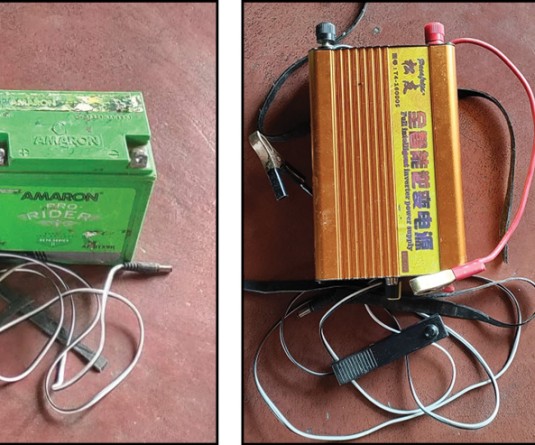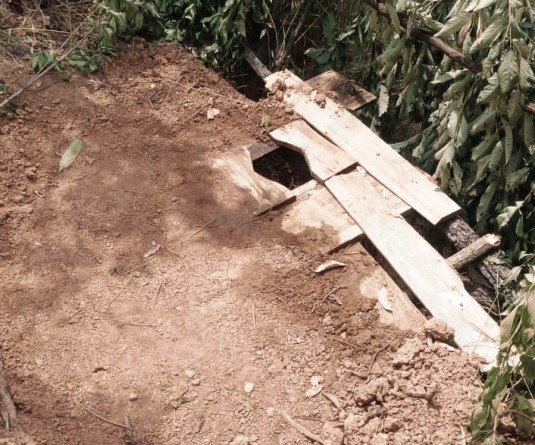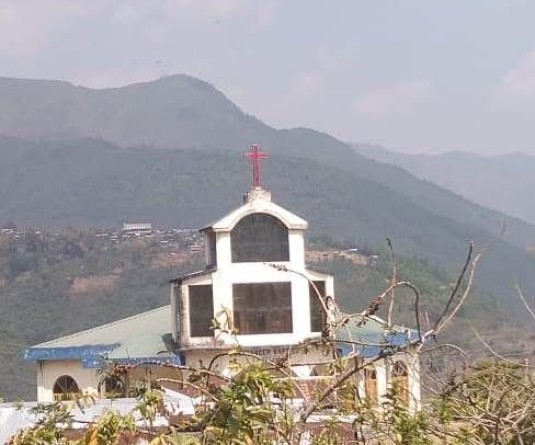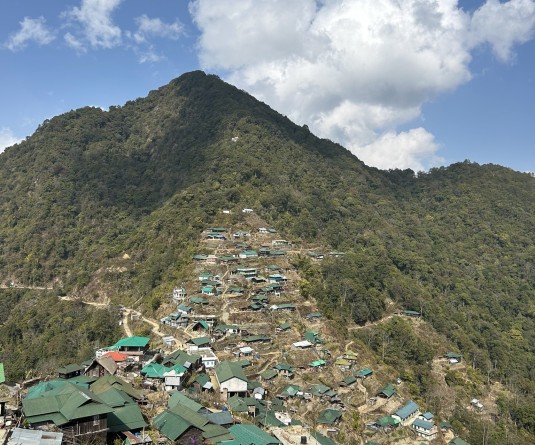1

Easterine Kire
Images from the photo exhibition ‘Home’ continue to haunt me. I stood before the series called, ‘Dad, Cancer and Family’ and, blinded by tears, could not move beyond the third frame. It is the story of a son capturing in black and white, his father’s journey through throat cancer until it finally snuffs out whatever life is left after treatment. The simply titled series has images that are brutally honest and heartrendingly painful: the family in prayer shows faces on which anxiety and premature grief have etched deep lines, and the shared loss is so transparent even as they beseech heaven.
Photographer Seyie Suohu explained that he has made this series to create more awareness about cancer. Throughout his father’s sickness, his family had done all that the doctors had advised them to do, nonetheless his father died of the disease at the age of 56. ‘We had put ourselves in the hands of doctors so completely because we have so much faith in them. My father suffered from throat cancer. He went through a major surgical operation followed by several bouts of radiation. We are not a rich family. My uncles helped us financially to meet the expenses of his treatment. Cancer is such an expensive disease. ‘
Seyie’s father grew progressively weaker and in the last stage of radiation, he died before they could bring him home. The second last photo is the empty bed that was made in preparation of his homecoming. The very last photo is of Seyie’s mother seated in a chair, alone.
‘We all need to know more about cancer. Nagas rank very high on the statistics for cancer. We need to know more about how it is caused, and how it affects the family, so we can prepare for better ways of dealing with it.’
24-year-old Seyie Suohu is from Kohima village, and has been a professional photographer since 2017. He says his works are based on storytelling and moving portraits. He is a contributing photographer to India Today and winner of the Sangai Photo Festival Grant.
Rajat Limbu, the next photographer, had an interesting series on street photographs on the streets of Kohima.
In one picture, four young men are lounging about in front of the Kohima War Cemetery sign near TCP. A village woman is included in the picture; she is seated on the milestone. In another frame, a pensive looking young man is juxtaposed against a female mannequin in a shop window. One of the pictures includes that of a young boy climbing through a barbed wire fence while a man stands by holding the wire apart. Rajat explained that the man had dropped his phone and the boy was trying to retrieve it.
These are ordinary events that the photographer plays witness to during the course of his day. Yet every picture has a small story to tell. Rajat captures the ordinariness of everyday life on the Kohima streets in pictures that are far from ordinary. As he says in his bio-note, ‘Street photography is very personal to me. There is beauty even in the simple activities of life.’ And he proves it by patiently walking the streets until the perfect photo-moment presents itself to him.
The theme of the exhibition focused on pictures that show the real Nagaland in perfectly normal images shorn of the exoticism that people have come to expect from Nagaland. Exhibition curator, Zhazo Miachieo, calls it a project of decolonising the way images from Nagaland have always been presented down the ages. The constant pursuit of the exotic has produced a stereotype about the Naga people to the outside world. Winner of the Toto-Tasveer young photography award 2017, Zhazo has many other achievements to his name.
He explains in the project statement, ‘A Normal Life’ that ‘Nagaland and its people have been documented by writers, anthropologists and ethnographers etc, since the 19th century. We were represented, misinterpreted and identified as a group of people known for their savagery, to feed the appetite of the readers beyond us. We never had the luxury to tell our own stories. This is a representation of what has not yet been told or emphasised about the Nagas - that we live a normal life.’
In pictures that show this normalcy of life in Nagaland, Zhazo’s has captured an elderly couple unloading firewood against a backdrop of mist-covered hills in the distance, a typical rainy day with a figure carrying an umbrella, two children skipping about as pink and yellow flowers behind them indicate the season of the year, Autumn in the village.
The fourth photographer is 26-year-old Shürhongu Kire, a freelance photographer who began his career in 2017.
He specialises in portraits and the series of portraits presented are impressive. ‘A person’s face has a lot of hidden emotions,’ he writes. ‘Every individual has a story to tell,’ is his comment on what draws him to this line of photography.
It was heartening to see post-colonial Nagaland decolonising itself in the area of the arts. The exhibition at D-café was on a subdued note, low profile and very focused therefore. It was impressive without trying to impress. In the end, it was not about brilliant colours and characteristically hornbill-y images. It went much deeper than that. The simply constructed images offered layers of meaning to the viewer. It is a major turning point, one that should be heeded carefully by the others that will follow in their footsteps.





